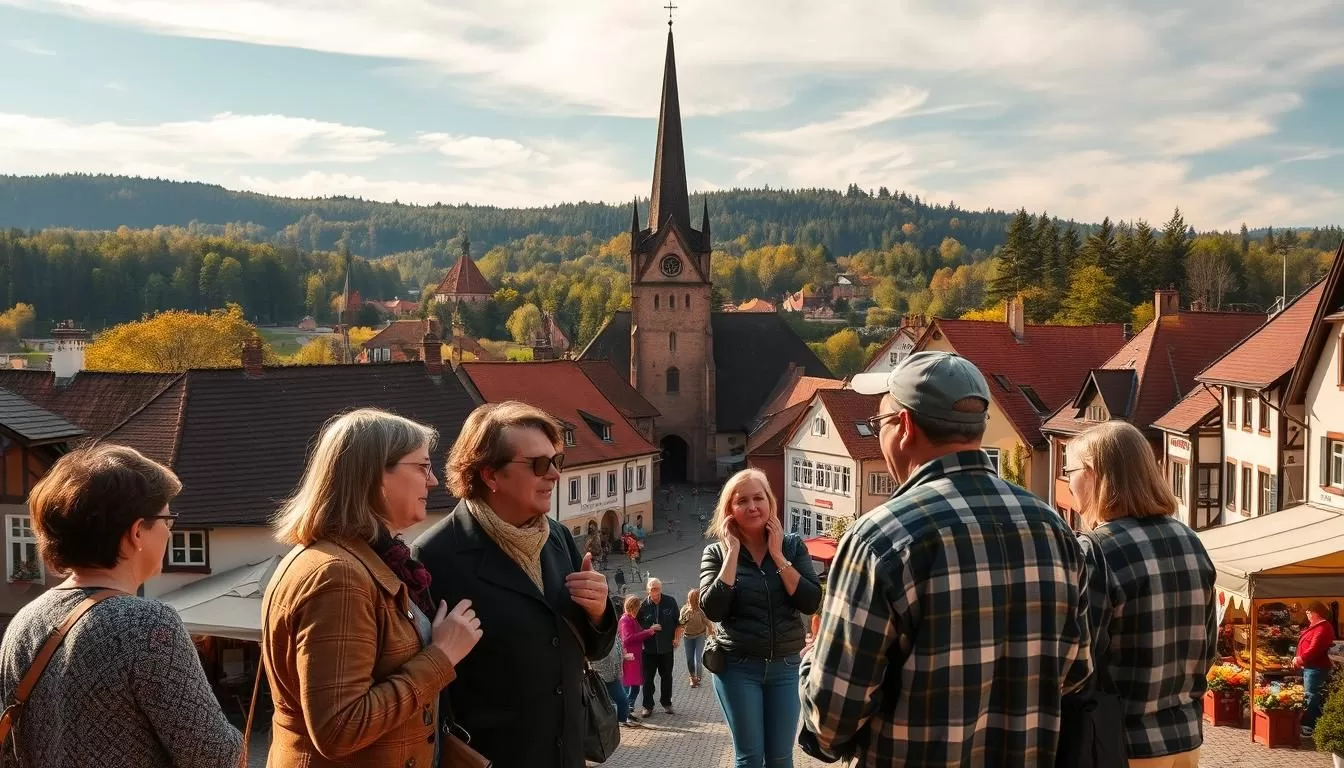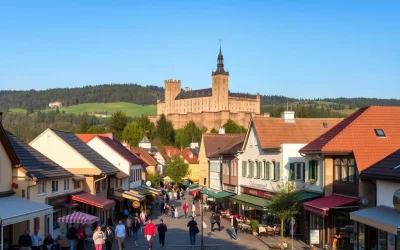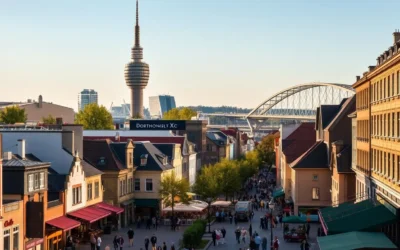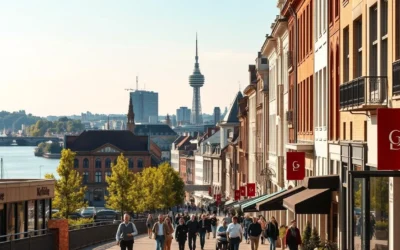✓ Accommodations ✓ Flights ✓ Rental Cars
Welcome to Saxony-Anhalt, a fascinating state in the Federal Republic of Germany. Known for its rich history and cultural heritage, this place offers a unique blend of tradition and modernity. The capital, Magdeburg, stands as a vibrant city that reflects the state’s dynamic spirit.
Inhabitants here primarily communicate in Standard German, which is the official language. However, local dialects also play a significant role in daily life, adding a distinct flavor to the region’s identity. These linguistic elements help shape the character of this district, making it a truly special part of the country.
As you explore Saxony-Anhalt, you’ll discover how its language and culture intertwine to create a unique experience. Stay tuned to learn more about the balance between traditional dialects and modern language trends in this remarkable state.
The Historical Roots of Saxony-Anhalt’s Linguistic Heritage
Exploring the past reveals how language evolved in this unique area. The history of this region is a tapestry woven with cultural and political changes. From the formation of the state to the influence of global events, every part of its story has shaped its linguistic identity.
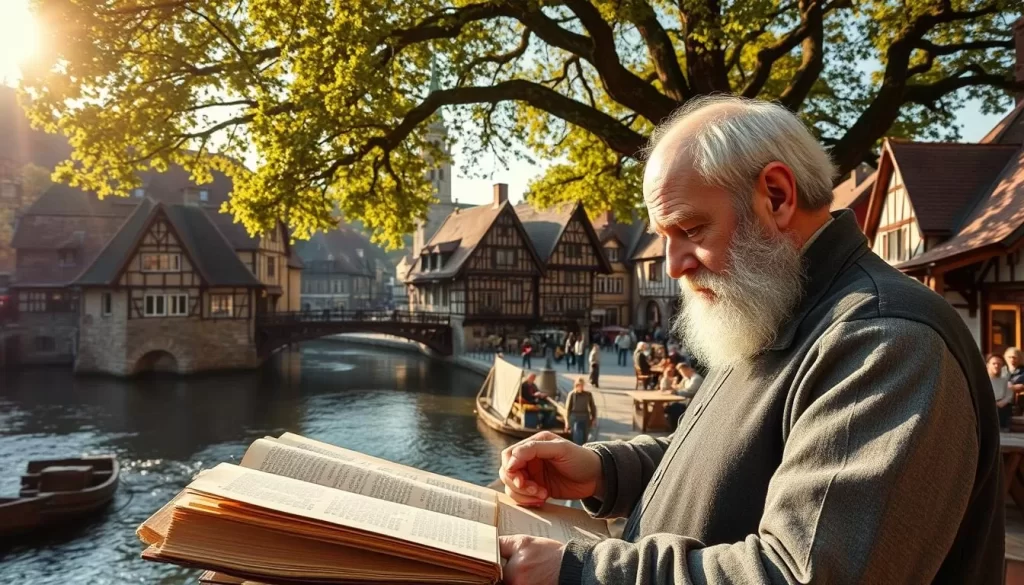
Formation of the State and Language Evolution
In July 1945, this region was formed by merging former Prussian lands and free states. This marked a new chapter in its heritage. The aftermath of World War II brought significant changes, including the division of the state in 1952. These events influenced how people communicated, blending traditional dialects with modern trends.
During this time, the population adapted to new realities. The division of the region created a unique linguistic landscape. Traditional dialects persisted, while Standard German became more prominent. This balance reflects the resilience of the people and their connection to their heritage.
UNESCO Heritage and Cultural Influences
The area is home to several UNESCO World Heritage sites, each telling a story of cultural interplay. These sites, such as the Dessau-Wörlitz Garden Realm, showcase centuries of history. They highlight the region’s role in shaping European culture and language.
Martin Luther, a key figure in the Protestant Reformation, also left a lasting impact. His work in the 16th century influenced not only religion but also language. The translation of the Bible into German made the language more accessible to the population.
| Key Historical Events | Impact on Language |
|---|---|
| Formation in 1945 | Blending of dialects and Standard German |
| Division in 1952 | Preservation of traditional dialects |
| UNESCO Heritage Sites | Cultural and linguistic preservation |
| Martin Luther’s Influence | Standardization of German language |
Today, the year 2023, the region continues to honor its past while embracing modern language trends. The heritage of this area remains a vital part of its identity, connecting the past with the present.
Saxony-Anhalt, Germany: Official and Widely Spoken Languages
Language plays a central role in shaping the identity of any region. In this area, Standard German serves as the official tongue, used in formal settings, education, and government. It’s the language that unites people across the territory, ensuring clear communication in public life.
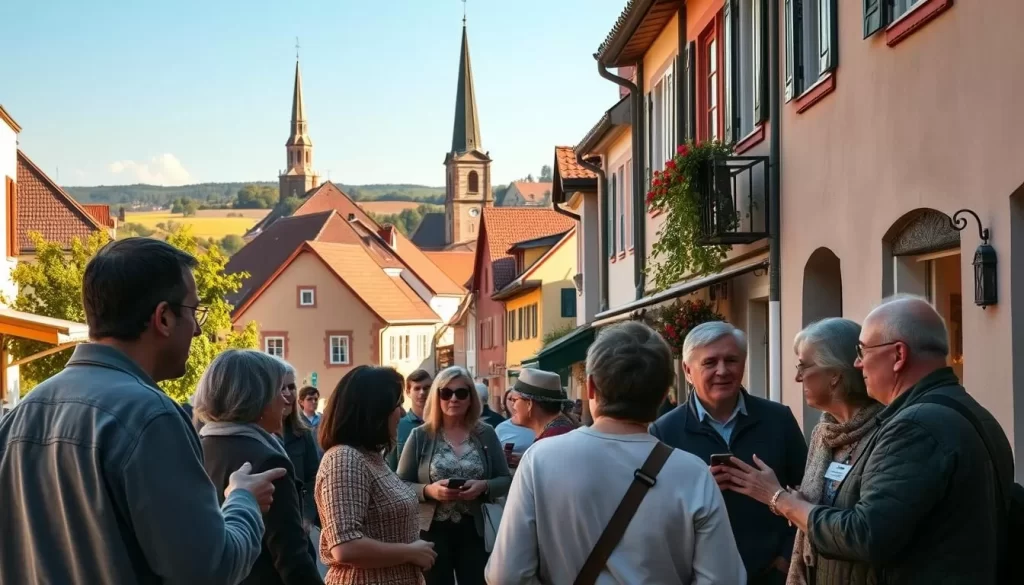
While Standard German dominates official spaces, regional dialects thrive in everyday conversations. These local variations add a unique flavor to the way people connect. They are a seat of cultural pride, preserving traditions passed down through generations.
Standard German as the Official Tongue
Over 95% of the population speaks Standard German or a dialect variant. This makes it the primary language for education, media, and legal matters. Its widespread use ensures that everyone, regardless of their home region, can communicate effectively.
In schools, students learn Standard German as the foundation of their education. It’s also the language of government, ensuring that policies and laws are accessible to all. This uniformity helps maintain order and clarity across the Federal Republic.
Regional Dialects and Minority Languages Explained
Beyond Standard German, regional dialects like Low German are still spoken in many communities. These variations are more than just ways of speaking—they’re a reflection of local identity. They connect people to their home and heritage.
Minority languages also play a vital role. For example, Low German is recognized as a regional language, protected and celebrated through cultural initiatives. These efforts ensure that linguistic diversity remains a core part of the region’s identity.
| Aspect | Details |
|---|---|
| Official Language | Standard German |
| Common Dialects | Low German, Thuringian |
| Minority Languages | Protected and celebrated |
| Cultural Role | Preserves local identity |
This blend of Standard German, regional dialects, and minority languages creates a rich linguistic tapestry. It’s a testament to the region’s ability to honor its past while embracing the present.
Regional Dialects and Their Unique Identities
The linguistic landscape of this area is a vibrant mix of tradition and modernity. Local dialects add a unique flavor to the region, preserving centuries of cultural heritage. These variations are more than just ways of speaking—they’re a reflection of identity.
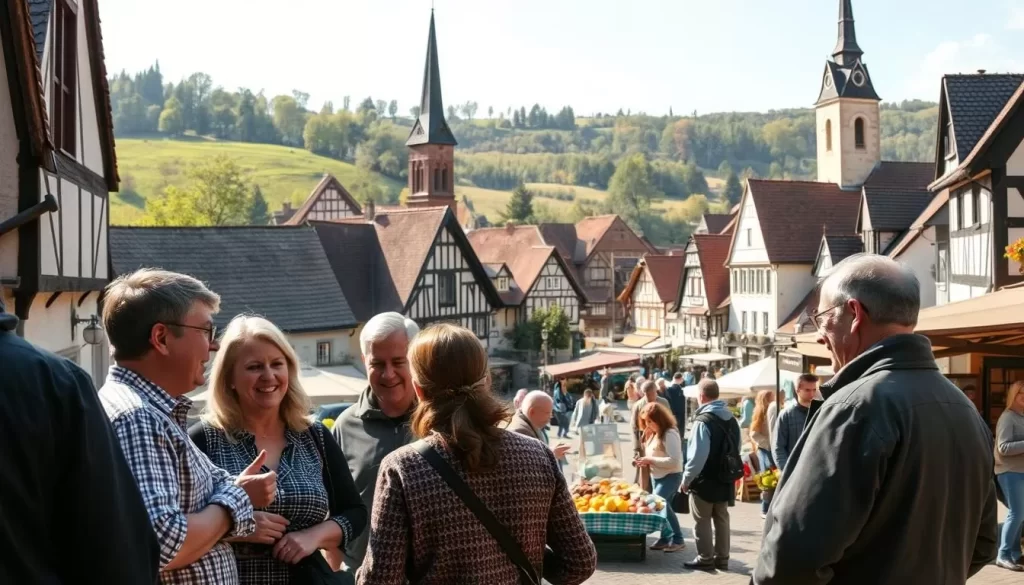
Low German and Local Vernaculars
Low German has deep roots in the northern plains of this german state. Historically, it was widely spoken across the region, especially in smaller towns. Today, it remains a vital part of local communication, connecting people to their heritage.
In rural areas, you’ll still hear Low German in everyday conversations. It’s a language of warmth and familiarity, often used in family settings. Efforts to preserve it include cultural events and educational programs, ensuring it doesn’t fade away.
Influence of Thuringian and Franconian Dialects
Neighboring regions like Thuringia and Franconia have also shaped the linguistic identity of this area. Their dialects blend seamlessly with local speech, creating a rich tapestry of sounds and expressions.
For example, the Thuringian dialect brings a melodic tone to the region. Franconian influences add unique vocabulary and pronunciation. Together, they enrich the way people communicate in this state saxony.
Preserving these dialects is crucial for maintaining the cultural mosaic of the german state. They are a living link to the past, ensuring that traditions continue to thrive in modern times.
Language in Education and Daily Communication
Education and communication shape the daily life of this vibrant region. From classrooms to public spaces, language plays a key role in connecting people. Schools here emphasize bilingual and multilingual programs, preparing students for a globalized world.

Impact of Bilingual and Multilingual Education
Local schools incorporate English and other foreign languages into their curriculum. Over 50% of primary schools offer bilingual programs, and enrollment has increased by 10% in the last five years. These programs help students develop strong language skills, benefiting both residents and visitors.
Bilingual education fosters cultural understanding and opens doors to international opportunities. For families, it ensures children grow up with a global perspective. In secondary schools, advanced language courses in English and French are popular, with 40% of students enrolled.
Media, Tourism, and Public Signage
Media and public signage also promote cultural diversity. Towns and districts actively support language programs designed for families and inhabitants. Multilingual signs in tourist centers make it easier for visitors to navigate and enjoy the region.
These initiatives bolster the local market, attracting international tourists. Public communication investments ensure that everyone, from residents to visitors, feels welcome. The integration of multiple languages in daily life reflects the region’s commitment to inclusivity.
| Aspect | Details |
|---|---|
| Bilingual Programs | Offered in 50% of primary schools |
| Advanced Language Courses | 40% of secondary students enrolled |
| Multilingual Signage | Supports tourism and communication |
| Cultural Diversity | Promoted through media and public initiatives |
Language is more than just a tool for communication—it’s a bridge that connects people across cultures. By embracing bilingual education and multilingual signage, this region ensures a bright future for its inhabitants and visitors alike. For more insights into how dialects shape regions, visit this resource.
Modern Language Trends and Migration Effects
Migration has reshaped the linguistic fabric of this region in profound ways. Over time, the influx of diverse populations has introduced new languages and cultural influences. This dynamic interplay continues to shape how people communicate in both public and private spheres.
Immigrant Languages and Changing Demographics
In recent years, the population has become more diverse due to migration. For example, Turkish, Arabic, and Polish are now commonly spoken in many communities. These languages enrich the cultural landscape and reflect the region’s evolving identity.
Demographic shifts have also impacted language use in education and the workplace. Schools are increasingly offering multilingual programs to accommodate students from different backgrounds. This ensures that everyone can thrive in a globalized industry.
Preservation Efforts in the Digital Era
As new languages emerge, preserving regional dialects remains a priority. Digital tools are playing a key role in this effort. Projects like online archives and mobile apps document and promote traditional speech patterns.
The federal republic supports these initiatives, ensuring that linguistic heritage remains vibrant. By combining traditional practices with modern technology, the region bridges the past and the present.
Adapting to change in time is essential for keeping the region’s linguistic heritage alive. Whether through migration or digital innovation, the language landscape continues to evolve, reflecting the dynamic spirit of its people.
Exploring Cultural Festivals and Linguistic Celebrations
Festivals and cultural events bring life to the region’s linguistic heritage. These celebrations are more than just gatherings—they’re a way to honor traditions while embracing modern communication. From historical church events to vibrant community festivals, each occasion tells a story of identity and pride.
Local Festivals Reinforcing Language Identity
Local festivals are a cornerstone of the region’s cultural heritage. Events like the Day of Reformation, celebrated on October 31, highlight the area’s historical ties to Martin Luther’s legacy. These gatherings often feature traditional songs, speeches, and performances in regional dialects, ensuring that local language remains alive.
Families play a key role in these celebrations. Whether it’s a church festival or a community fair, these events bring generations together. They’re a chance to share stories, pass down traditions, and strengthen regional identity.
Cultural Events and Modern Communication
Modern technology has transformed how these festivals are experienced. Public announcements at events now use both traditional language and digital media. This blend of old and new ensures that everyone, from locals to tourists, can connect with the celebrations.
Cultural centres also play a vital role. They serve as sites of preservation, hosting workshops and exhibitions that showcase the region’s linguistic diversity. These initiatives not only educate but also inspire pride in the community.
| Event | Role in Language Preservation |
|---|---|
| Day of Reformation | Celebrates Martin Luther’s influence on language |
| Church Festivals | Preserves traditional songs and dialects |
| Cultural Centres | Hosts workshops and exhibitions |
| Community Fairs | Strengthens family and regional ties |
These festivals and events are a testament to the region’s ability to honor its past while embracing the present. They’re a reminder that language is not just a means of communication—it’s a living part of the community’s heritage.
Conclusion
The linguistic heritage of this state reflects a rich tapestry of history and culture. From the evolution of language to the vibrant role of its city hubs, this region has seamlessly blended tradition with modernity.
Educational institutions and cultural festivals play a vital role in preserving this legacy. Schools emphasize bilingual programs, while festivals celebrate dialects and local traditions. These efforts ensure that the past remains alive in the present.
As digital tools continue to shape communication, the region bridges its historical roots with modern innovation. Explore this unique linguistic landscape to discover how it connects the past, present, and future.
The above is subject to change.
Check back often to TRAVEL.COM for the latest travel tips and deals.
